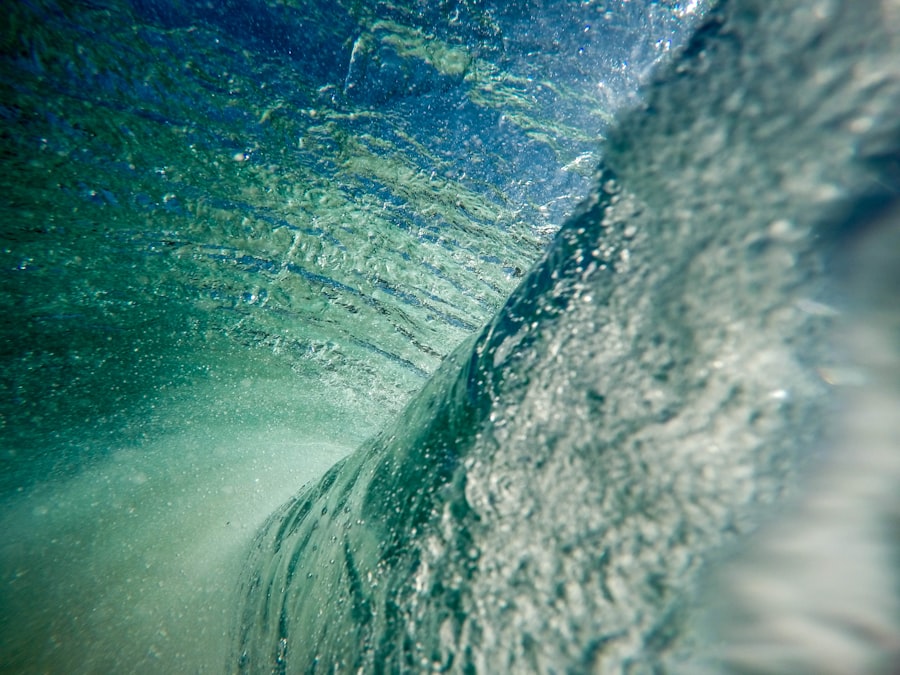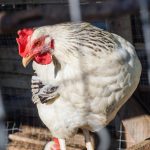During winter, preventing water from freezing is a significant challenge for backyard chicken owners. This phenomenon occurs due to the cold air surrounding the water container, causing the water molecules to slow down and form ice crystals as temperatures drop. Wind chill can accelerate this process, making it more difficult to maintain water in a liquid state.
Access to unfrozen water is crucial for chickens’ health and hydration, as dehydration can lead to various health issues. The type of container used also affects water freezing. Metal and plastic containers are more susceptible to freezing compared to insulated or heated options.
These materials conduct cold temperatures more readily, causing the water inside to freeze faster. Containers that are not properly insulated or protected from the elements are also more prone to freezing. Understanding these factors is essential for chicken owners to develop effective strategies for keeping their flock’s water unfrozen during winter months.
By addressing these issues, owners can ensure their chickens have constant access to liquid water, maintaining their health and well-being throughout the cold season.
Table of Contents
- 1 Insulating Water Containers: Tips for Keeping Water Warmer for Longer
- 2 Heating Solutions: Options for Keeping Water from Freezing
- 3 Preventing Freezing: Tips for Regularly Checking and Maintaining Water Sources
- 4 Alternative Watering Methods: Exploring Non-Frozen Watering Options
- 5 Winterizing the Coop: How to Create a Cozy Environment for Chickens in Cold Temperatures
- 6 Ensuring a Constant Supply of Unfrozen Water for Backyard Chickens
- 7 FAQs
- 7.1 What are some ways to keep backyard chickens’ water from freezing?
- 7.2 What is a heated waterer and how does it work?
- 7.3 How can I insulate my chickens’ water containers to prevent freezing?
- 7.4 What are heated bases and how do they help prevent water from freezing?
- 7.5 Is it safe to add hot water to the chickens’ waterers throughout the day?
Key Takeaways
- Understanding the Problem: Why Does Chicken Water Freeze?
- Cold temperatures cause water to freeze, making it difficult for chickens to access.
- Insulating Water Containers: Tips for Keeping Water Warmer for Longer
- Use insulated water containers to help retain heat and prevent freezing.
- Wrap containers with foam or bubble wrap for added insulation.
- Heating Solutions: Options for Keeping Water from Freezing
- Consider using heated waterers or adding a heated base to the water container.
- Use heated water bowls or buckets to ensure a constant supply of unfrozen water.
- Preventing Freezing: Tips for Regularly Checking and Maintaining Water Sources
- Check water sources frequently and break up any ice that forms.
- Consider adding a small amount of salt to the water to lower its freezing point.
- Alternative Watering Methods: Exploring Non-Frozen Watering Options
- Install a nipple waterer system that keeps water inside the coop and prevents freezing.
- Use a heated hose to provide a constant supply of unfrozen water.
- Winterizing the Coop: How to Create a Cozy Environment for Chickens in Cold Temperatures
- Add extra bedding to the coop to provide insulation and warmth.
- Seal any drafts and ensure the coop is well-ventilated to prevent moisture buildup.
- Conclusion: Ensuring a Constant Supply of Unfrozen Water for Backyard Chickens
- By understanding the causes of freezing and implementing insulation and heating solutions, backyard chicken owners can ensure their chickens have access to unfrozen water throughout the winter.
Insulating Water Containers: Tips for Keeping Water Warmer for Longer
Simple Insulation Methods
One simple method is to wrap the water container in insulation material such as foam or bubble wrap. This extra layer of insulation can help to retain some of the heat from the water, preventing it from freezing as quickly.
Insulated Containers
Another option is to place the water container inside a larger, insulated container such as a cooler or a specially designed poultry waterer cozy. These insulated containers provide an extra layer of protection against the cold temperatures, helping to keep the water from freezing.
Location Matters
In addition to insulating the container itself, it’s important to consider the location of the water source. Placing the water container in a sheltered area, such as inside the chicken coop or under a covered porch, can help to protect it from the elements and reduce the likelihood of freezing.
By taking these simple steps to insulate water containers and protect them from the cold, chicken owners can help ensure that their flock has access to unfrozen water throughout the winter months.
Heating Solutions: Options for Keeping Water from Freezing

For chicken owners facing extremely cold temperatures, heating solutions may be necessary to keep water from freezing. One popular option is to use heated waterers specifically designed for poultry. These heated waterers are equipped with a built-in heating element that prevents the water from freezing, even in sub-zero temperatures.
Another option is to use heated base units that can be placed underneath traditional water containers. These heated bases provide a constant source of warmth to keep the water from freezing, without requiring a specialized heated waterer. In addition to heated waterers and bases, some chicken owners opt for heated pet bowl options that are readily available at pet supply stores.
These bowls are designed for outdoor use and can be an effective solution for keeping chicken water from freezing. It’s important to carefully follow the manufacturer’s instructions when using any type of heating solution to ensure safe and effective operation. By exploring these heating options, chicken owners can find a solution that works best for their specific needs and climate conditions.
Preventing Freezing: Tips for Regularly Checking and Maintaining Water Sources
Preventing freezing requires regular checking and maintenance of water sources throughout the winter months. One important tip is to check water containers multiple times a day to ensure that they have not frozen over. By monitoring the water sources regularly, chicken owners can take action quickly if they notice any signs of freezing.
Additionally, it’s important to clean water containers regularly to remove any debris or ice buildup that could contribute to freezing. Another tip for preventing freezing is to consider using smaller water containers that can be refilled more frequently. By providing smaller amounts of water at a time, chicken owners can ensure that their flock always has access to unfrozen water, even if one container does freeze over.
Additionally, using multiple water containers throughout the coop and outdoor areas can help ensure that there is always a source of unfrozen water available to the chickens.
Alternative Watering Methods: Exploring Non-Frozen Watering Options
In addition to traditional water containers, there are alternative watering methods that can help provide chickens with unfrozen water during the winter months. One option is to use heated poultry nipple drinkers, which are designed to provide a constant supply of unfrozen water to chickens. These nipple drinkers are equipped with a heating element that prevents the water from freezing, making them an effective solution for cold climates.
Another alternative watering method is to use heated buckets or troughs that are designed for livestock and outdoor use. These heated containers are equipped with a built-in heating element that keeps the water from freezing, providing a reliable source of unfrozen water for chickens. Additionally, some chicken owners opt for automatic watering systems that are designed to prevent freezing by circulating the water and keeping it moving at all times.
By exploring these alternative watering methods, chicken owners can find effective solutions for providing their flock with unfrozen water throughout the winter months.
Winterizing the Coop: How to Create a Cozy Environment for Chickens in Cold Temperatures

Insulation and Draft-Proofing
Winterizing the coop is crucial for creating a cozy environment for chickens in cold temperatures. One key aspect of winterizing the coop is ensuring that it is well-insulated to retain heat and protect against cold drafts. This can be achieved by adding insulation material to the walls and ceiling of the coop, as well as sealing any gaps or cracks where cold air could enter.
Bedding and Ventilation
Providing plenty of bedding such as straw or wood shavings can help insulate the coop and provide extra warmth for the chickens. Another important aspect of winterizing the coop is providing adequate ventilation while still retaining heat. Proper ventilation is essential for maintaining good air quality and preventing moisture buildup, which can lead to frostbite and other health issues for chickens.
Supplemental Heat Sources and Final Touches
By installing adjustable vents or windows with covers, chicken owners can regulate airflow while still keeping the coop warm and comfortable for their flock. In addition to insulating and ventilating the coop, it’s important to provide supplemental heat sources such as heat lamps or radiant heaters if necessary. These heat sources can help maintain a comfortable temperature inside the coop and prevent freezing of both water and eggs. By taking these steps to winterize the coop, chicken owners can create a cozy environment for their flock and ensure their well-being during cold temperatures.
Ensuring a Constant Supply of Unfrozen Water for Backyard Chickens
In conclusion, ensuring a constant supply of unfrozen water for backyard chickens during the winter months requires careful planning and consideration of various factors. Understanding why chicken water freezes and how different materials and insulation methods can affect this process is essential for finding effective solutions. Insulating water containers, exploring heating options, regularly checking and maintaining water sources, and considering alternative watering methods are all important strategies for preventing freezing and providing chickens with access to unfrozen water.
Winterizing the coop is also crucial for creating a cozy environment for chickens in cold temperatures. By insulating, ventilating, and providing supplemental heat sources as needed, chicken owners can help ensure that their flock stays healthy and comfortable throughout the winter months. By implementing these strategies and exploring different options for keeping water from freezing, backyard chicken owners can provide their flock with a constant supply of unfrozen water, even in the coldest of climates.
If you’re interested in keeping backyard chickens, you may also want to check out this article on how to insulate a chicken coop to ensure your feathered friends stay warm during the winter months. Proper insulation can also help prevent their water from freezing, which is essential for their health and well-being.
FAQs
What are some ways to keep backyard chickens’ water from freezing?
Some ways to keep backyard chickens’ water from freezing include using heated waterers, insulating the water containers, using heated bases, and adding hot water to the waterers throughout the day.
What is a heated waterer and how does it work?
A heated waterer is a water container specifically designed to prevent the water from freezing. It typically has a built-in heating element that keeps the water at a temperature above freezing, ensuring that the chickens have access to unfrozen water at all times.
How can I insulate my chickens’ water containers to prevent freezing?
You can insulate your chickens’ water containers by wrapping them in insulating materials such as foam insulation, bubble wrap, or even old blankets or towels. This helps to retain the heat from the water and prevent it from freezing in cold temperatures.
What are heated bases and how do they help prevent water from freezing?
Heated bases are platforms or stands that are designed to hold the water containers and have a built-in heating element to keep the water from freezing. The heat from the base prevents the water in the containers from reaching freezing temperatures.
Is it safe to add hot water to the chickens’ waterers throughout the day?
Yes, it is safe to add hot water to the chickens’ waterers throughout the day to prevent the water from freezing. However, it’s important to use water that is not too hot to avoid harming the chickens or damaging the water containers.
Meet Walter, the feathered-friend fanatic of Florida! Nestled in the sunshine state, Walter struts through life with his feathered companions, clucking his way to happiness. With a coop that’s fancier than a five-star hotel, he’s the Don Juan of the chicken world. When he’s not teaching his hens to do the cha-cha, you’ll find him in a heated debate with his prized rooster, Sir Clucks-a-Lot. Walter’s poultry passion is no yolk; he’s the sunny-side-up guy you never knew you needed in your flock of friends!







